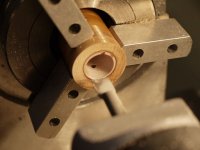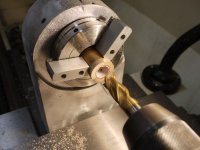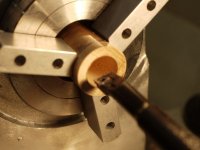I have been making some dust - again due to this Philippine cue I have been working
on now for a long time. First it was the joint which dissolved and I repaired - now
the cue has started to make a buzz in the A joint.
The owner is very fond of this cue - it plays after his liking and I made him a matching OB1 shaft.
Now - internal A joint buzz is something I have not repaired before but please follow the post and the pics and I'll try to explain what I have experienced and at the end my question...
This pic shows the cue after I cut it. Note the purple ish gaga used. It looks like some form of filler for house walls or cars....?
Not to mention the cavities and the gap - which I'm 99% sure is causing the buzz..
on now for a long time. First it was the joint which dissolved and I repaired - now
the cue has started to make a buzz in the A joint.
The owner is very fond of this cue - it plays after his liking and I made him a matching OB1 shaft.
Now - internal A joint buzz is something I have not repaired before but please follow the post and the pics and I'll try to explain what I have experienced and at the end my question...
This pic shows the cue after I cut it. Note the purple ish gaga used. It looks like some form of filler for house walls or cars....?
Not to mention the cavities and the gap - which I'm 99% sure is causing the buzz..
Attachments
Last edited:





